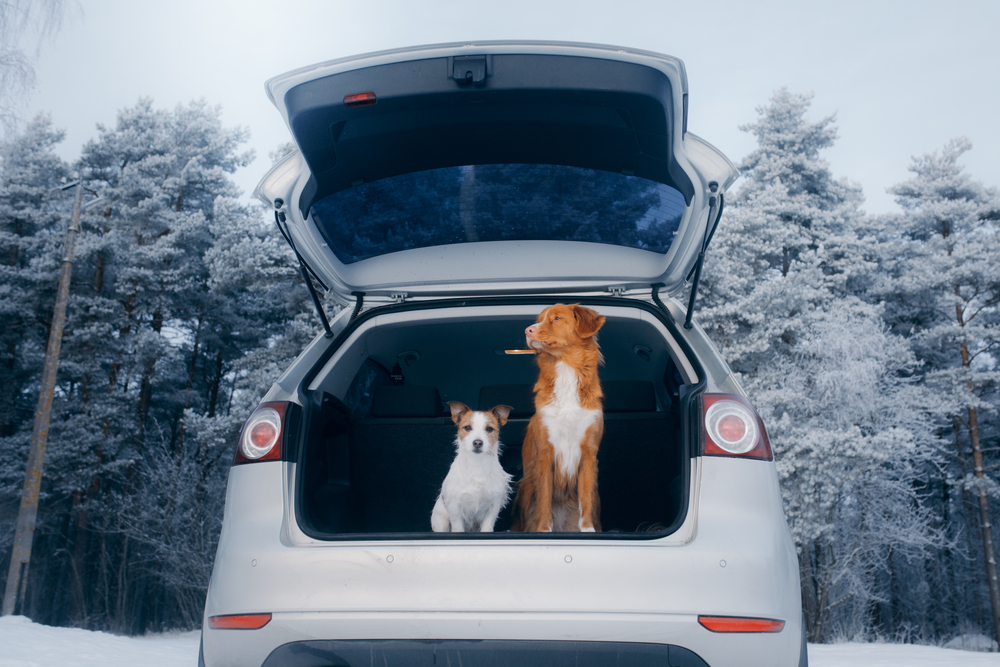As temperatures drop, it’s easy to forget that leaving your dog alone in a car can be just as dangerous in the cold as it is in the heat. Unlike a home, cars don’t effectively insulate warmth, meaning they cool down quickly once the heater is off. Within minutes, the inside of the vehicle can become uncomfortably cold.
Imagine an early morning drive when it’s 50°F outside. You’re shivering, waiting for the car heater to warm up. While you can adjust the temperature, your dog doesn’t have that option. Once their body temperature drops to around 99°F (37.2°C), dogs are at risk for hypothermia. Since a dog’s normal temperature is 101-102.5°F (38.3-39.2°C), they’re more vulnerable to the cold than you might think.
Affiliate Disclaimer: This post may contain affiliate links and we may earn a small commission when you click on the links at no additional cost to you so we can continue to provide you with helpful tips and tricks. As an Amazon Affiliate, we earn from qualifying purchases. Thank you for supporting our small business.
Signs of Hypothermia in Dogs
Recognizing the signs of hypothermia early is critical. They resemble symptoms humans experience in extreme cold:
- Rapid breathing that gradually slows and becomes shallow
- Fast heart rate followed by a slower heart rate
- Sluggish reactions, lack of coordination
- Cold extremities and pale gums
- Dilated pupils
- Loss of consciousness
If you notice any of these signs, immediately take action to warm your dog. Turn on your car’s heater and call your vet to see if you should bring your dog in for emergency care. In severe cases, prolonged exposure to cold can cause frostbite, where blood flow is directed away from extremities to vital organs. This can cause lasting tissue damage, so don’t hesitate to seek veterinary assistance if needed.
If your vet advises that a visit isn’t necessary, continue warming your dog once you get home. You can do this by warming a blanket in the dryer, then wrapping it around them, or placing a hot water bottle (wrapped in a towel) against their stomach. Make sure it’s well-insulated to avoid burns. Some hot water bottles even come with soft covers for extra safety.
Recommended Product: K&H Self-Warming Crate Pad
One way to keep your dog comfortable during travel in cold weather is by using a self-warming crate pad. A top-rated option is the K&H Pet Products Self-Warming Dog Crate Pad, which uses a thermal layer to reflect your pet’s body heat back to them. This pad is ideal for cold car rides because it provides warmth without electricity and is made from soft microfleece, giving your pet a comfortable and safe option for chilly weather
Takeaways for Cold-Weather Car Safety
For your pet’s safety, avoid leaving them alone in a car, regardless of the weather. In temperatures as mild as 60-70°F, cars can overheat, but hypothermia risks rise when temperatures dip below 50°F.
If you must have your dog with you in freezing weather, bring a thick blanket or consider using a self-warming crate pad for extra warmth. An even better solution is to have someone wait with the dog while you run your errand. Not only will this keep your pet warm, but it also helps them feel safe and secure.
Each year, pets are at risk due to extreme temperatures in cars. By taking precautions and equipping yourself with tools like a self-warming crate pad, you can ensure your dog stays comfortable and safe.
If you found this post helpful, you might also like: How to Potty Train Your Puppy


